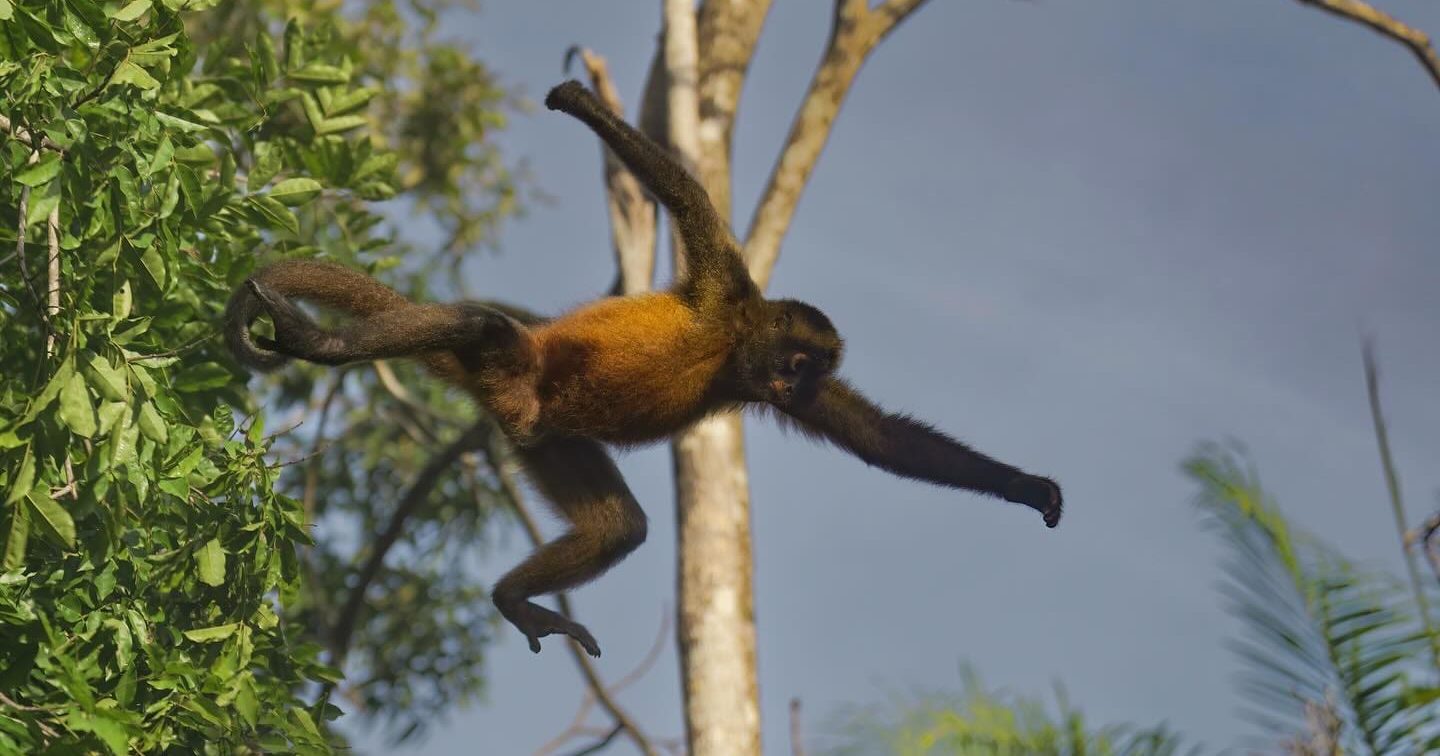Spider monkeys, known for their playful antics and impressive agility, are one of Costa Rica’s most captivating wildlife species. Found primarily in the lush rainforests that drape much of the country, these primates are not just a delight to observe but also play crucial roles in their ecosystems.
Characteristics and Behavior
Spider monkeys are slender creatures with long limbs and prehensile tails, which they skillfully use as a fifth limb to swing between tree branches. Their name derives from their spider-like appearance when they dangle by their tails. Adults typically weigh between 6 and 8 kg, with a glossy coat that ranges from golden to dark brown, depending on the species.
One of the most striking features of spider monkeys is their sociability. They live in large, loose groups of up to 40 individuals. However, during the day, they split into smaller subgroups to forage, which helps reduce food competition among them. Their diet is mainly frugivorous, consisting predominantly of fruits, but they also eat leaves, flowers, and nuts.
Fun Facts: The Playful Acrobats of the Canopy
Spider monkeys are renowned for their playful nature. They are incredibly acrobatic, capable of swinging through the trees with a grace and ease that is mesmerizing to watch. Their joyous play is not just for fun; it helps young monkeys learn the skills they need for survival in the dense forest canopy.
Their communication is also a fascinating aspect of their behavior. Spider monkeys use a variety of vocalizations, facial expressions, and body movements to communicate. From barks and whinnies to expressive eyebrow raises, they have a sophisticated language that reflects their complex social structures.
Where to See Spider Monkeys in Costa Rica
Costa Rica offers numerous opportunities to see these charming primates in their natural habitat. Some of the best places include:
– Corcovado National Park: Known as one of the most biodiverse places on Earth, this park on the Osa Peninsula is home to several troops of spider monkeys.
– Tortuguero National Park: Accessible only by plane or boat, this remote park is famous for its canals and wildlife, including the spider monkey.
– Manuel Antonio National Park: Although this park is one of the smallest in Costa Rica, it is one of the most popular due to its abundant wildlife and beautiful beaches.
– Monteverde Cloud Forest Reserve: Higher up, in the cooler climes of the cloud forest, spider monkeys navigate the misty canopy, offering a different perspective on their lifestyle.
Ecological Role
Spider monkeys are vital for the health of their ecosystems. As prolific fruit eaters, they help in seed dispersal. Many seeds pass through their digestive systems unharmed and are deposited far from their parent trees, complete with a ready supply of fertilizer. This role as seed dispersers makes them crucial in maintaining the structure and diversity of their forest homes.
Their presence also indicates the health of their environment since they require large tracts of undisturbed forest to thrive. Conservation efforts to protect spider monkeys consequently help preserve vast areas of rainforest and the myriad of other species that depend on these habitats.
Conservation Status
Despite their importance, spider monkeys face threats from habitat loss due to deforestation and the illegal pet trade. Efforts to protect their habitats are critical for ensuring that these enchanting animals continue to swing through the rainforests of Costa Rica for generations to come.
Observing spider monkeys in their natural environment is a delightful experience that underscores the beauty and complexity of Costa Rica’s ecosystems. Their playful nature and ecological importance make them not just a joy to watch but also a vital part of the rainforest community.Photos by Anki Forsbeth, click to follow him on Facebook!






